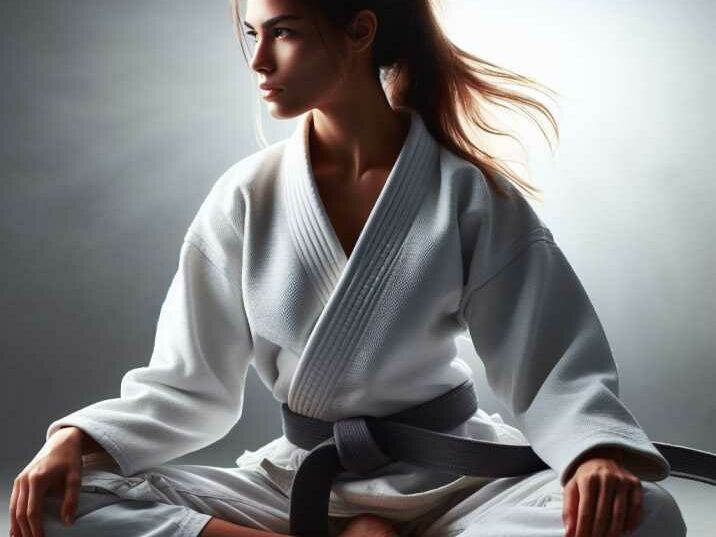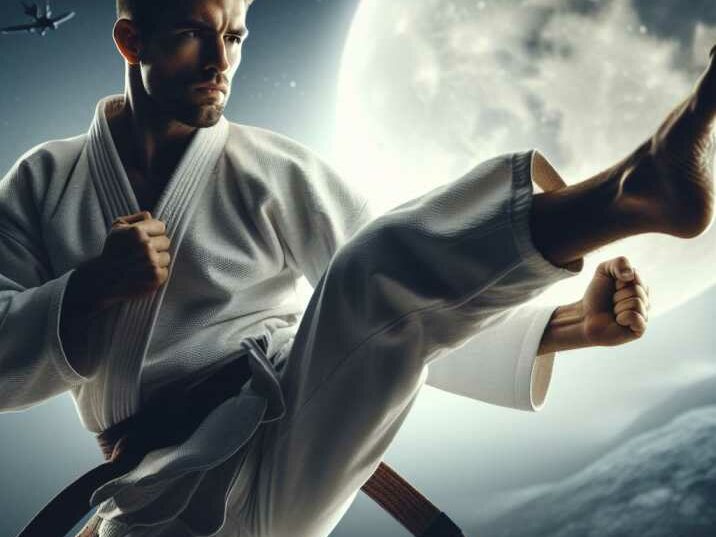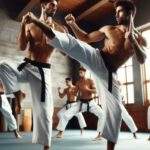Introduction:
Table of Contents
In an age where personal safety is paramount, the quest for the most effective martial art for real-life scenarios has intensified. From self-defense to physical fitness and mental discipline, martial arts offer a holistic approach to personal development. But amidst the plethora of styles available, which one truly reigns supreme in practical application?

Exploring Martial Art for Real-Life Scenarios
1. Karate:
Originating from Japan, karate emphasizes striking techniques such as punches, kicks, and knee strikes. Known for its simplicity and effectiveness, karate equips practitioners with the skills to defend against various attacks.

2. Brazilian Jiu-Jitsu (BJJ):
Renowned for its ground fighting techniques, Brazilian Jiu-Jitsu (BJJ) focuses on grappling and submission holds. It emphasizes leverage and technique over brute strength, making it ideal for self-defense situations where size and strength are not advantages.
3. Krav Maga:
Developed for the Israeli military, Krav Maga prioritizes practicality and efficiency. It incorporates techniques from boxing, wrestling, judo, and street fighting, making it a formidable system for real-life confrontations.
4. Muay Thai:
Hailing from Thailand, Muay Thai is known as the “Art of Eight Limbs” for its extensive use of fists, elbows, knees, and shins. Its emphasis on powerful strikes and clinch fighting makes it a valuable martial art for self-defense.
5. Taekwondo:
Originating from Korea, Taekwondo is renowned for its dynamic kicks and fast-paced techniques. While it is often associated with sport competition, Taekwondo also offers practical self-defense techniques suitable for real-life scenarios.
Choosing the Right Martial Art for Real-Life Scenarios
When embarking on your martial art for real-life scenarios, it’s essential to align your choice with your specific needs, preferences, and circumstances. Here’s a closer look at each factor to consider:
1. Self-Defense Techniques:
In martial art for real-life scenarios, the effectiveness of self-defense techniques is paramount. Look for martial arts that prioritize practical applications over flashy moves. Consider how techniques such as strikes, blocks, and joint locks can be utilized in common self-defense situations like grabs, chokes, or strikes from attackers. Practicality and simplicity are key; focus on mastering techniques that are easy to learn and apply under pressure.
2. Physical Fitness:
Beyond self-defense, martial arts offer a holistic approach to physical fitness. Assess how each martial art contributes to your overall health and conditioning. Some styles, like Muay Thai and Brazilian Jiu-Jitsu, provide rigorous cardiovascular workouts while also building strength and flexibility. Others, such as Tai Chi, focus more on gentle movements and balance. Choose a martial art that aligns with your fitness goals and complements your current level of physical activity.
3. Mental Discipline:
Martial arts training extends beyond physical prowess; it cultivates mental fortitude, discipline, and focus. Look for styles that emphasize the development of these attributes, as they are invaluable in handling confrontational situations with calmness and clarity. Practices like meditation, breath control, and visualization are often integrated into martial arts training to enhance mental resilience and concentration. Choose a style that resonates with your personal philosophy and aligns with your desire for mental growth and self-improvement.
4. Accessibility:
Consider the practical aspects of training, such as the availability of training facilities and qualified instructors in your area. Research local martial arts schools and visit them to observe classes, meet instructors, and assess the training environment. Factors like class schedules, location, and affordability should also be taken into account. Choose a martial art that you can realistically commit to, considering your time constraints and logistical considerations.
5. Personal Preference:
Ultimately, your choice of martial art should reflect your individual preferences, goals, and lifestyle. Whether you’re drawn to the dynamic kicks of Taekwondo, the grappling techniques of Brazilian Jiu-Jitsu, or the practical self-defense focus of Krav Maga, trust your instincts and choose a style that resonates with you on a personal level. Consider factors such as cultural significance, philosophical principles, and the community atmosphere of each martial art school. Remember, enjoying the journey is just as important as reaching your destination.
Table of Information Martial Art for Real-Life Scenarios:
| Martial Art | Origin | Key Techniques | Focus |
|---|---|---|---|
| Karate | Japan | Strikes, Blocks | Stand-up Fighting |
| Brazilian Jiu-Jitsu | Brazil | Grappling, Submission | Ground Fighting |
| Krav Maga | Israel | Strikes, Defenses | Practical Self-Defense |
| Muay Thai | Thailand | Strikes, Clinch | Striking and Clinch Fighting |
| Taekwondo | Korea | Kicks, Strikes | Speed and Agility |
Conclusion
In the quest for the best martial art for real-life scenarios, it’s essential to remember that the journey transcends mere physical techniques. Whether it’s the precision of Karate, the grappling of Brazilian Jiu-Jitsu, or the practicality of Krav Maga, martial arts offer a path to self-discovery and personal growth.
Ultimately, it’s not just about the techniques learned but the mental discipline, resilience, and confidence cultivated along the way. So, as you embark on your martial arts journey, embrace the transformation it brings, and may you find strength and empowerment in every step forward.
FAQs (Frequently Asked Questions)
1. Which martial art is best for beginners?
Answer: For beginners, martial arts like Karate or Taekwondo are excellent choices due to their structured curriculum and emphasis on foundational techniques.
2. Is martial arts suitable for children?
Answer: Yes, many martial arts schools offer specialized classes for children, promoting physical fitness, discipline, and confidence in a safe environment.
3. Can I learn martial arts online?
Answer: While online resources can supplement traditional training, it’s advisable to seek hands-on instruction from qualified instructors for proper technique and safety.
4. How long does it take to become proficient in a martial art?
Answer: The time to proficiency varies depending on factors such as frequency of training, individual aptitude, and the complexity of the martial art. However, consistent practice over several years is typically required to achieve mastery.
5. Are martial arts competitions necessary for skill development?
Answer: While competitions can enhance skills such as timing and adaptability, they are not essential for personal growth in martial arts. Many practitioners focus solely on self-improvement and self-defense without engaging in competitive events.


